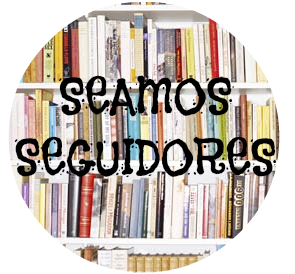Last
Monday we had with us Jaime Zulaika Goikoetxea, literary translator
mostly from English, but also modern Greek, Italian and French. He
kindly accepted our invitation to chat about the world of
translation, Michael Cunningham and of course, “The Hours”.
Thank you, Ágnes Fiser-Nagy for the photo!!!
About
Our Guest
Comparing
with most people this days, Jaime keeps quiet on the social media and
anyone looking online for any information about him may be seriously
dissapointed. One thing that is clear is that he has a brother, Jesus
Zulaika, who followed into his footsteps and also became a
translator. It may stay a mistery how it happens, that two brothers
both decide to become translators, but there is no doubt Jaime loves
literature and reading and that is a for sure a key that allows him
to do his work so well!
In
a TV programme Nostromo, he once said: “La traduccion es
fundamentalmente escribir. Traducir es escribir, pero escribir con
partitura” (Translation is basically writing. To translate is to
write, but to write with a music score). During our meeting he has
explained that the most important part is knowing perfectly well the
language you are translating to.
There
is no doubt his knowledge of Spanish surpases that of avarage people.
Not surprisingly, he is also a writer: an author of Astarté, a novel
published in 1980 has not published anything since, but has revealed
that he is currently finishing a project that we certainly hope to
read one day.
At
the moment Jaime Zulaika is working with Anagrama and among many
authors he has translated Ian McEwan, John Steinbeck, Graham Greene,
Sarah Waters, Jonathan Franzen, Michel Houellebecq, James Salter,
Martin Amis, Truman Capote, John Updike, Philip Roth. It is only
natural to wonder, which of them did he enjoy translating most and
why. Hovewer, the answer seems not to be that easy. Those who
definitely were recommended to us, after some pressing and insiting,
were McIwan and Julian Barnes. We've already read McIwan in past in
Donostia Book Club, Julian Barnes should make our 2017 reading list!
Some
of us were also very curious how we can know if it's the translation
that fails or simply the author of the original was not that good.
Unfortunately there is no trick for that. What we've discovered is
that sometimes editorials pressure translators a bit to improve their
translations, if they're too close tp the original that lacks in
quality. Yikes! That's a little bit disturbing to know!
Michael Cunningham's
Bio
We
had only 1,5 hour to grill Jaime on so many topics! After these short
introduction we moved to Michael Cunningham and his biography. He was
born in Cincinnati, Ohio on Nov. 6th 1952 to Don and Dorothy
Cunningham. Due to his father´s work in advertising the family was
always on the move, until they finally settled in Pasadena,
California when Michael was 10. He received his B.A. (bachelor of
arts) in English literature from Stanford University and his M.F.A.
from the University of Iowa.
His
first short story, “Cleaving” was published in 1981 in Atlantic, his first
novel “Golden States” in 1984. Both focused on exploration of
American family. He gained critical acclaim in 1990 for the novel A
Home at the End of the World, which is quite ironic as that was the
work that was supposed to prove to his romantic partner, Ken Corbett,
that he's not a marketable writer. It was also turned into a film.
Flesh and Blood, another novel, followed in 1995. His work appeared
in The Atlantic Monthly, Redbook, Esquire, The Paris Review, The New
Yorker, Vogue, and Metropolitan Home. His story "White Angel"
was chosen for Best American Short Stories 1989. Michael Cunningham
received the 1999 Pulitzer Prize for Fiction and the PEN/Faulkner
Award, both for The Hours. He currently lives in New York City and
apart from writing, teaches creative writing at Brooklyn College.
Although
Cunningham is gay and was (is?? it would be about 28-30 years
together now and we pondered a bit on this one, but there is no clue
if they continue together or not) in a long-term domestic partnership
with psychoanalyst Ken Corbett, he dislikes being referred to as a
gay writer. While he often writes about gay people, he does not "want
the gay aspects of [his] books to be perceived as their single,
primary characteristic." It's quite curious, because as Jaime
has shared with us, during his short promotional visit to Barcelona
he was mostly interested in visiting known gay clubs and not so
interested in talking about books.
“The
Hours”
There
is no doubt that The Hours (1998) was strongly inspired by
Virginia Woolf's Mrs. Dalloway (1925). Originally Cunningham
wanted the book to be the modern, rewritten version of Mrs.
Dalloway. But somehow writing about just one character seemed to
be to dull. He said in one of the interviews: “I thought about
contrasting this day in the life of my reimagined Clarissa with this
day in the life of Virginia. So then it was a diptych, and it still
felt a little thin, like a conceit. And I got into one of those black
moods: oh, this was a mistake, it isn't working out, it's a tinselly
little experiment that'll be swept away by time." And then his
mother popped into his daydream in the form of Laura Brown, probably
his greatest achievement in terms of character. The frustrated
housewife with suicidal impulses whom Cunningham created as the third
moves through her life in 1950s LA with that sense of disappointed
expectation, the shallowness of all things and its flip side, the
sudden flights of joy and inexplicable wonderment that underpins the
novel. He based the character on his mother, who he thought would be
delighted. She was not. "She tried to put a cheerful face on it,
but I think she felt indicted and betrayed; mothers, don't raise your
children to be novelists." In the same interview he continues:
"I realised that part of my attachment to Clarissa Dalloway, and
to Virginia Woolf, stemmed from my sense that my mother was a little
like an Amazon captured and trapped and sent to live a life that was
too small for her. Although she was someone who wasn't really happy
just keeping the house, she was obsessive about the house. She could
spend all day looking for the perfect cocktail napkins. I began to
think, if you take away the result, the end product, mom and Virginia
Woolf had something in common; they were both women devoted to an
ideal, to the image of impossible perfection, and Virginia Woolf was
trying to write great books, and did. Mom was just trying to make a
great cake."
So
what about the similarities between both novels? The most obvious is
the title: originally planned by Virginia for Mrs.
Dalloway,
survived in her drafts and notes to be finally taken by Cunningham.
Both books embark the events of one day only, in case of Cunningham's
novel one day for each of three female characters. The main
technique, visible in both is stream of consciousness, although in
The Hours it's not as heavy and difficult to follow, it's definitely
broken by dialouges and first person narration in many parts. The
content itself also bares many similarities: both Clarissas, flowers,
parties, a glimpse of a celebrity while on errands and Sally in both
books as a partner for Clarissa (in Mrs
Dalloway
only a desired one, in The
Hours
the relatioship is fullfilled). Stolen kisses appear not only in both
novels, but also in each story in The
Hours:
Virginia and her sister, Laura and her neighbour and Clarissa and
Richard vs. original Clarissa and Sally. That are actually scenes
that mark one of the main focuses of the novel: the courage to follow
one's dreams and desires.
Woolf’s
suicide in “The Prologue” is very significant. It, in a way,
shows how she can't see herself following her dreams, how her illness
stops her from achiving what she wants. Michael Cunningham depicts
Woolf as a woman who fights against her insanity and who creates her
famous novel, Mrs. Dalloway, which takes place on one day of 1923.
In Cunningham’s depiction, she suffers headaches all the time and
faces her dilemmas between life and death. Her suicide influences the
other two women’s developments of storylines in the parts of “Mrs.
Brown” and “Mrs. Dalloway.”
Compared
with Clarissa Vaughan, Virginia Woolf refuses to look in the mirror
because of her fear. Woolf is described as a woman who treats herself
as a “failed writer,” as Laura Brown regards herself a “failed
housewife.” On the other hand, Clarissa reflects that people must
be disappointed with how plain and shallow her life is. All of them
feel and overwhelming sense of failure. In “The Prologue,” we
read: “She herself has failed. She is not a writer at all, really;
she is merely a gifted eccentric”. Even Richard Brown in the part,
“Mrs. Dalloway,” also believes that he has failed. We can say
that Virginia
Woolf is in the process of
writing the novel. Laura Brown
is in the process of reading the
novel. And Clarrisa Vaughn (nicknamed by Richard Mrs. Dalloway) seems
to be in the process of
"re-living" the novel. All
three stories are interwinding and creating
an “overall” story. There are many ways to interpret it, same as
many topics to point out as the most important ones. I would love to
hear your interpretation. Please share it in comments or send me an
email!
Also, I recommend strongly the film "The Hours" (2002). As Cunningham has said: "I may be the only living American novelist who is entirely happy with what Hollywood has done to his novel. I naturally feel slightly embarrassed about that. I worry that if I were a more substantial person, Id be outraged. And yet, they did a remarkable job.". But what to expect from a picture with Meryl Streep, Julianne Moore and Nicole Kidman? It's a true masterpiece!




















Comentarios
Publicar un comentario